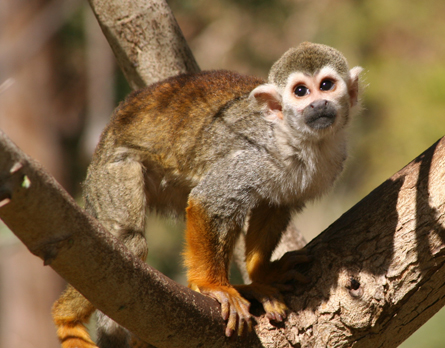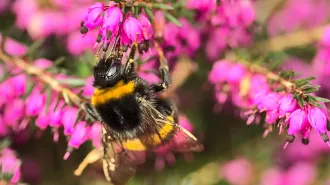Some 9 percent of mammal species throughout the Western Hemisphere could, within roughly a century, become climate refugees with no suitable homes, a new study finds. In some areas conditions will be far worse, with 39 to 50 percent of mammals unable to emigrate fast enough to find suitable ecosystems.

“If species can’t migrate spontaneously, they’re going to go extinct. That’s the bottom line,” says Nina Hewitt of York University in Toronto, a biogeographer who was not involved in the new analyses.
The work is not the first study to gauge whether species will keep pace with climate-induced changes to their environments, including a warming or drying. But earlier efforts merely looked at an ideal climate for some species and then evaluated whether and where these conditions might exist decades down the line. Such studies “assumed if a suitable climate existed, the species would move there,” explains Carrie Schloss of the University of Washington in Seattle. Schloss led the new study, which appeared online the week of May 14 in the Proceedings of the National Academy of Sciences.
The new study accounts for species’ dispersal rates — how far each can travel to establish new homes and how frequently such relocations occur.
Mammals don’t typically move much until they prepare to breed. The new analyses of 493 mammal species found many simply cannot move quickly enough to reach hospitable new ranges. Sometimes they’re too small, as in the case of moles and other small rodents. Biology — what age a species reaches reproductive maturity and how often it breeds — also can severely limit relocation rates. This proved especially true for monkeys, which are especially likely to become climate refugees.
The Washington team looked at projections for the Americas from 10 different global-climate computer programs for periods through 2100. “When dispersal is ignored, the ranges of 149 of the 493 mammalian species in this study are on average projected to expand,” Schloss says. But including how far each species can travel to new homes reversed the trend and projected a range contraction for 86 of these species, or nearly 60 percent.
Even these assessments have probably overestimated the ability of mammals to keep pace with climate, Schloss acknowledges, since her team unrealistically assumed all species will reproduce at the youngest age possible and head for new home ranges in precisely the right directions.
Moreover, adds ecologist Shaye Wolf of the Center for Biological Diversity in San Francisco, this analysis doesn’t account for additional factors, such as whether a migrating species’ food will exist in its newfound home or whether the animal will confront new or more aggressive predators and competitors.
Still, accounting for species dispersal impacts “represents an important new contribution to evaluating whether animals will be able to keep pace with climate change,” she says.
Hewitt agrees. The new analysis also points to where species conservation biologists may want to focus their efforts for developing migration corridors for animals that will need to move, she says, or programs to otherwise assist imperiled species in reaching a new home range.







